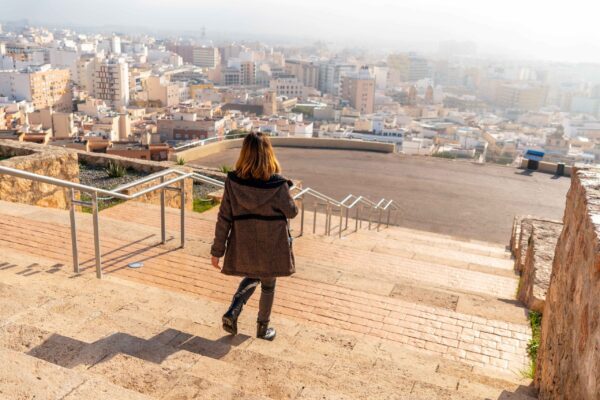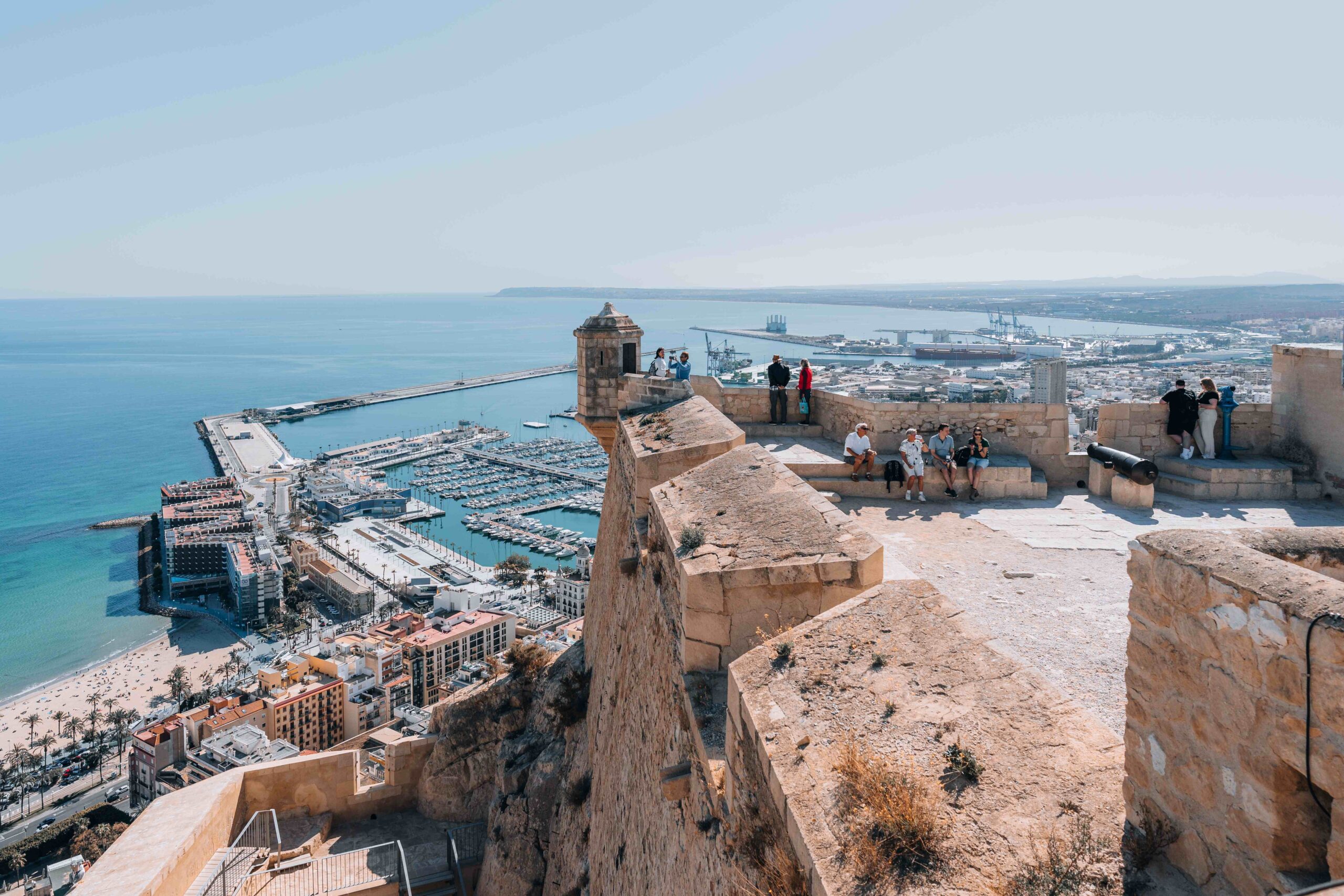
Off-season in Alicante carries a slower rhythm. The promenade is quieter, the light softer. Locals linger over coffee on tiled patios, and the air feels different—still warm, but touched by salt and the hush of fewer footsteps.
You begin not with a destination but with a direction—down toward the marina, where the sea laps at the edge of Playa del Postiguet. This isn’t a city trying to impress. It just is. A place where orange trees line walkways, and gulls call over whitewashed walls. This is what Alicante slow travel is about: letting the place unfold naturally.
The old town, El Barrio, remains unchanged in essence. Narrow alleys, aged façades in faded pink and ochre. Laundry flutters overhead. You pause at a small plaza—maybe Plaza del Carmen—where potted plants lean into corners and the air carries faint music from a nearby window.
Here, time doesn’t pass in hours. It changes as the sun moves, or when the breeze brushes past the castle walls. Santa Bárbara still watches from above, casting its long shadow over the quiet city. Fewer tourists make the climb in winter, but those who do are rewarded with silence and views that feel personal.
Spain off-season tourism offers small luxuries: no waiting lines at Mercado Central, seats available by the window at a local taberna, and the waiter who has time to recommend his favorite dish.
Try arroz a banda—rice cooked in fish broth—or a slice of tarta de almendra. The food comes at its own pace, just like the conversation. You might find yourself sitting longer than expected, sipping café con leche as the streets shift with afternoon shadows.
A tram rumbles past, heading north toward quieter stretches—El Campello, maybe even Villajoyosa. There, pastel houses lean over the sand, and fishermen untangle nets without ceremony. The coast feels lived-in, not performed.
Returning to Alicante, a walk along the Explanada de España feels quietly grounding. The mosaic tiles move like waves beneath your feet. Pigeons gather near benches. Palm trees overhead, unmoved by time.
Museo de Arte Contemporáneo opens its doors. Inside, the cool stillness of

stone meets bright canvas and subtle sculpture. The space isn’t busy, and the stillness makes the art easier to take in. Outside, a street musician tunes his guitar. A child laughs. The curve of a balcony catches your eye—one you somehow missed the day before.
Alicante in the off-season doesn’t ask for attention. It waits. And if you move slowly, it meets you halfway.
As evening settles, lights flicker on across the hillside. The scent of jasmine sharpens slightly in the cooler air. A couple walks ahead, arms linked. Behind them, the castle glows faintly against a pale sky.
You don’t need a list here. The city offers something better—a chance to feel your way through. This is what slow travel means. Not just in motion, but in mindset.
Alicante reminds you that travel isn’t always about what’s new. Sometimes it’s about seeing clearly—what’s been there all along.
Comments are closed